Treble’s Best Albums of the 70s: Part One
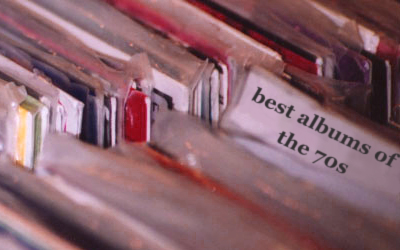
1971
 10. Leonard Cohen — Songs of Love & Hate (Columbia)
10. Leonard Cohen — Songs of Love & Hate (Columbia)
Welcome to the world of Leonard Cohen, where the sun don’t shine, the flowers don’t bloom and the red wine flows freely and we, as listeners, are all the better for it. Songs of Love and Hate is one the most depressingly beautiful albums ever recorded, including odes to that sexy virgin Joan of Arc and one of the most heartbreaking songs about infidelity ever written. — Molly B. Eichel
9. Led Zeppelin — IV (Atlantic)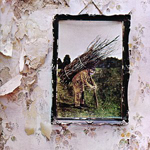
Jimmy Page was “immersed in Crowley’s uniform of imagery,” living in his former, and supposedly haunted, castle when the band took on four runes as their symbolic representations and recorded and released one of the most successful records of all time. I’d be surprised if it wasn’t in your collection already, and if it isn’t, don’t tell anybody. Just go out and get it right now. I’ll wait. — Terrance Terich
 8. Can — Tago Mago (United Artists)
8. Can — Tago Mago (United Artists)
Take four German musicians, add a Japanese busker on vocal duties, let them play 18 minute epics, 12 minute free-jams and some four-minute funk and what do you get? Tago Mago, the definitive Can album, and the definitive introduction to German prog-rock, or what is also known as “krautrock.” Though some may lump Can with the likes of Rush and Pink Floyd, Can deserves much better. Can was too far ahead of their time to actually have any true “peers.” — Jeff Terich
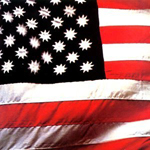 7. Sly & The Family Stone — There’s a Riot Going On (Epic)
7. Sly & The Family Stone — There’s a Riot Going On (Epic)
With the dream of the sixties all but dead, Sly and his crew expressed their dismay at the demise of society as they saw it. With Sly himself sinking into the perils of drug addiction, he managed to put out an album that was ever so socially aware, serving as the yang to the yin of Marvin Gaye’s What’s Going On. — Chris Pacifico
Read Review
 6. The Who — Who’s Next (Decca)
6. The Who — Who’s Next (Decca)
Ignore the fact that the original title of the project that led to Who’s Next was called Lifehouse. Ignore the fact that the AOR band of the same name sucks something fierce. Ignore the fact that Who’s Next is the primer for overblown stadium rock dinosaur-ism. The only important thing here is just how loud and utterly enormous this album is. Daltrey, Townshend, Entwistle and Moon had come a long way since their stuttering mod-pop days and created an album as gigantic as the monolith on the album’s cover. And much like its 2001 counterpart, along with its presence came a mighty primate (Keith Moon) smashing the fuck out of a pile of bones (his drum set), and thus, Who’s Next was born. Bookended by the album’s two best-known songs, “Baba O’Riley” and “Won’t Get Fooled Again,” this collection sees synthesizers making their way into the band’s oeuvre, which may have been the beginning of something truly awful in rock music of the decade. Still, then it was novel. It was interesting. And it was loud. — Jeff Terich
 5. Rolling Stones — Sticky Fingers (Rolling Stones)
5. Rolling Stones — Sticky Fingers (Rolling Stones)
In the ’60s the Stones played perpetual second fiddle to the Beatles, but now that the Fab Four had frayed and fractioned, Jagger, Richards and company would play second fiddle to no one (only to discover that Led Zeppelin would take their blues riffs to other extremes). Sticky Fingers was considered a sloppy and drug addled follow-up to the brilliance of Let it Bleed, but songs like “Wild Horses,” “Brown Sugar,” and “Moonlight Mile” prove otherwise. — Terrance Terich
 4. John Lennon — Imagine (Apple)
4. John Lennon — Imagine (Apple)
Imagine‘s tracklist is framed between a dream and a celebration; the former for utopia, the latter for the redemptive powers of romantic love. Lennon’s most popular album — which he admits may be due in part to a certain poppy, sugar-coating — Imagine, even with its bursts of angst, is ultimately something gorgeously hopeful. — Hubert Vigilla
Read Review
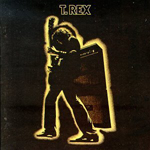 3. T. Rex — Electric Warrior (Reprise)
3. T. Rex — Electric Warrior (Reprise)
For Marc Bolan, it was all about girls and cars. And dancing. And rock `n’ roll. And outer space; A little mythology too. Marc Bolan’s lyrics, albeit brief, seemed to stick to these topics, primarily. Sex and driving seemed to blur together, merging in a hot, dirty sexy rock `n’ roll melting pot. And underneath that melting pot was some of the most rockin’ music ever recorded and the beginning of the genre we now know as “glam rock.” — Jeff Terich
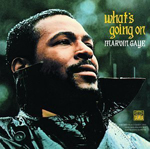 2. Marvin Gaye — What’s Going On? (Motown)
2. Marvin Gaye — What’s Going On? (Motown)
A major turning point in his career, Marvin Gaye’s masterpiece also served as a wake up call for America to realize that it was not on the right track. Issues brought to the table include police brutality, racism, poverty, and the agonizing peril of the ghettos in the backyard of the common folk who ignore their neighbors’ suffering. And of course Gaye expressed himself in a lush and soulful manner that made him the true class act that was until his untimely death in 1984. — Chris Pacifico
 1. David Bowie — Hunky Dory (RCA)
1. David Bowie — Hunky Dory (RCA)
Hunky Dory was David Bowie’s chrysalis, the cocoon from whence Ziggy Stardust emerged, featuring a mixture of glam, folk and rock that would soon gel into the impresario’s most famous incarnation. Most bought this album for the single “Changes,” but the real reason for multiple plays were the brilliant “Quicksand,” “Queen Bitch” and “Life on Mars?” — Terrance Terich
Personal Best
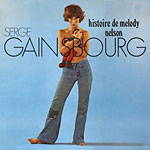 Serge Gainsbourg — Histoire de Melody Nelson (Philips)
Serge Gainsbourg — Histoire de Melody Nelson (Philips)
Music’s quintessential dirty old man, French songster Serge Gainsbourg, released what many have seen as his most impressive, yet most disturbing, album in 1971. Histoire de Melody Nelson, a concept record about a man’s love affair with a teenage girl, begins with the man almost taking out the lass in his Bentley as she’s riding her bike. The album then degenerates into a naughty, Nabokov-ian love affair, set to a laid-back, somewhat funky groove. As Gainsbourg whispers about his young lover, Jane Birkin (Serge’s real-life sweetheart) giggles orgasmically on an otherwise vocal-less track. Even the cover art depicts a topless, barefoot nymphet clutching a stuffed monkey, suggesting both sexuality and childhood simultaneously. Gainsbourg was later buried with that very monkey at his funeral, but the influence of Melody lives on. Air, Beck and David Holmes have all appropriated the grooves on this album in some way or another, and I can understand why. This is, hands down, one of the coolest-sounding records in history. — Jeff Terich
 Joni Mitchell — Blue (Reprise)
Joni Mitchell — Blue (Reprise)
I was born the year that Joni Mitchell’s Blue was released. I take comfort in this fact. The album had been on the shelves for over three months when I was brought into the world. Something tells me that this is more than mere karma or kismet. Two of my biggest loves are poetry and music and Mitchell blends the two perfectly. The songs on Blue resonate and ache with personal poetry. From the bookends of the head over heels love song “All I Want” to the heartbreaking loss in “The Last Time I Saw Richard,” the album runs the gamut of feelings and emotions that represent what it is to be human. “River” is one of my favorite songs of all time and is included in our “Best Songs of the ’70s” feature. — Terrance Terich
 Harry Nilsson — Nilsson Schmilsson (RCA)
Harry Nilsson — Nilsson Schmilsson (RCA)
Good ol’ Harry stands, pipe in hand, clad in a bathrobe, pondering his day. He actually looks like the narrator of “Gotta Get Up,” the leadoff track on Nilsson Schmilsson. He might be hungover, begrudgingly facing the day slowly, but doing so nonetheless. Nilsson was “shambolic” before the word was bastardized by NME, singing about having to go about his day and live life, be it ever so banal and uninspiring. But the music-hall burlesque of that track was, contrarily, a magnificent and super-joyous opener to Nilsson’s first true masterpiece. He had been accused of being “Beatles-lite” but Nilsson offered so much more. An ace songwriter, his tunes on Schmilsson included the hard rocking “Jump Into the Fire,” the touching ballad “I’ll Never Leave You” and the druggy, silly “Coconut.” Let’s not forget about some of the covers he included, like the soulful “Early in the Morning” and the old-school rock `n’ roll of “Let the Good Times Roll.” Simple, warm and fuzzy, Nilsson Schmilsson is an album guaranteed to relieve you of your bellyache. — Jeff Terich

